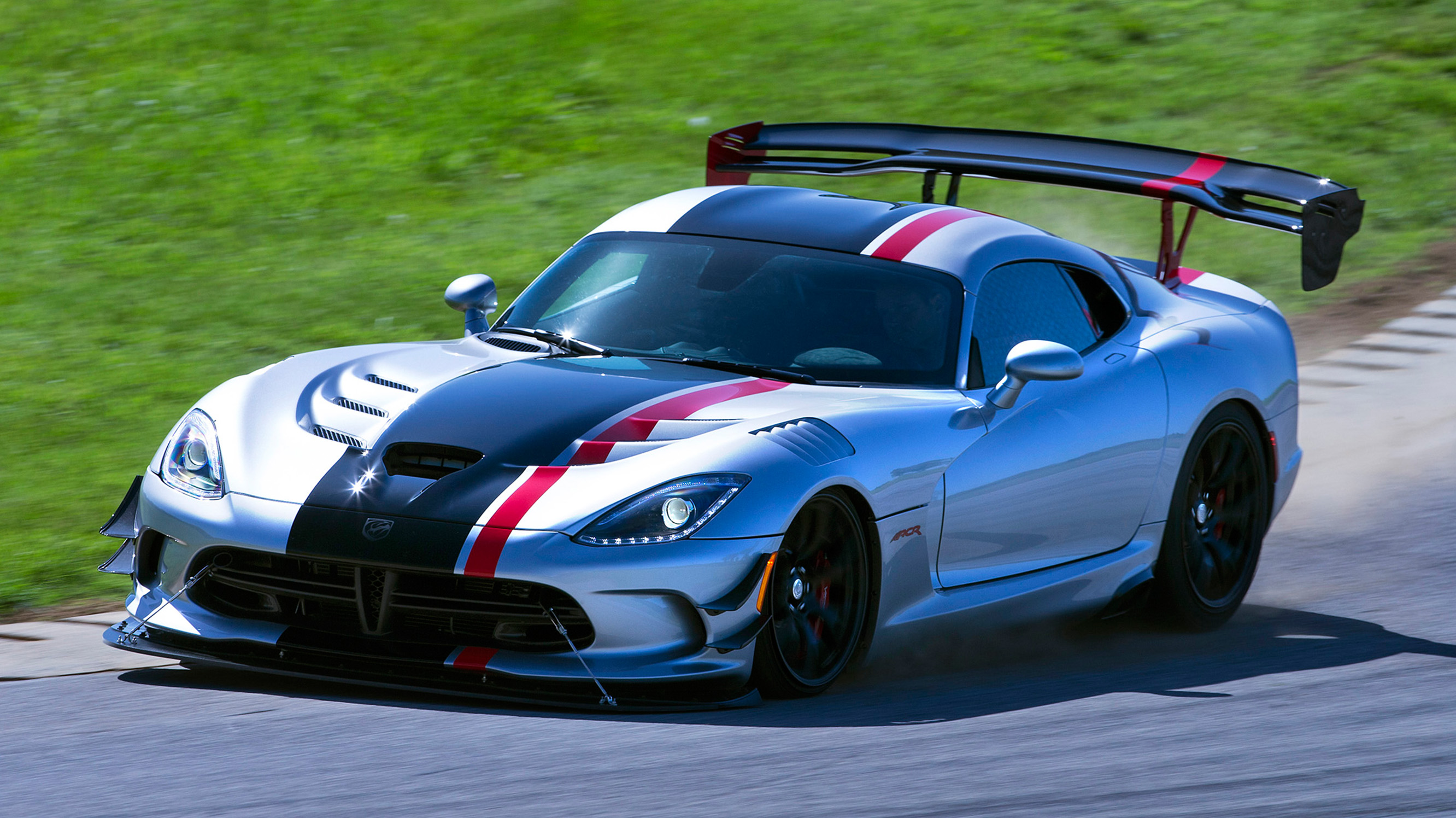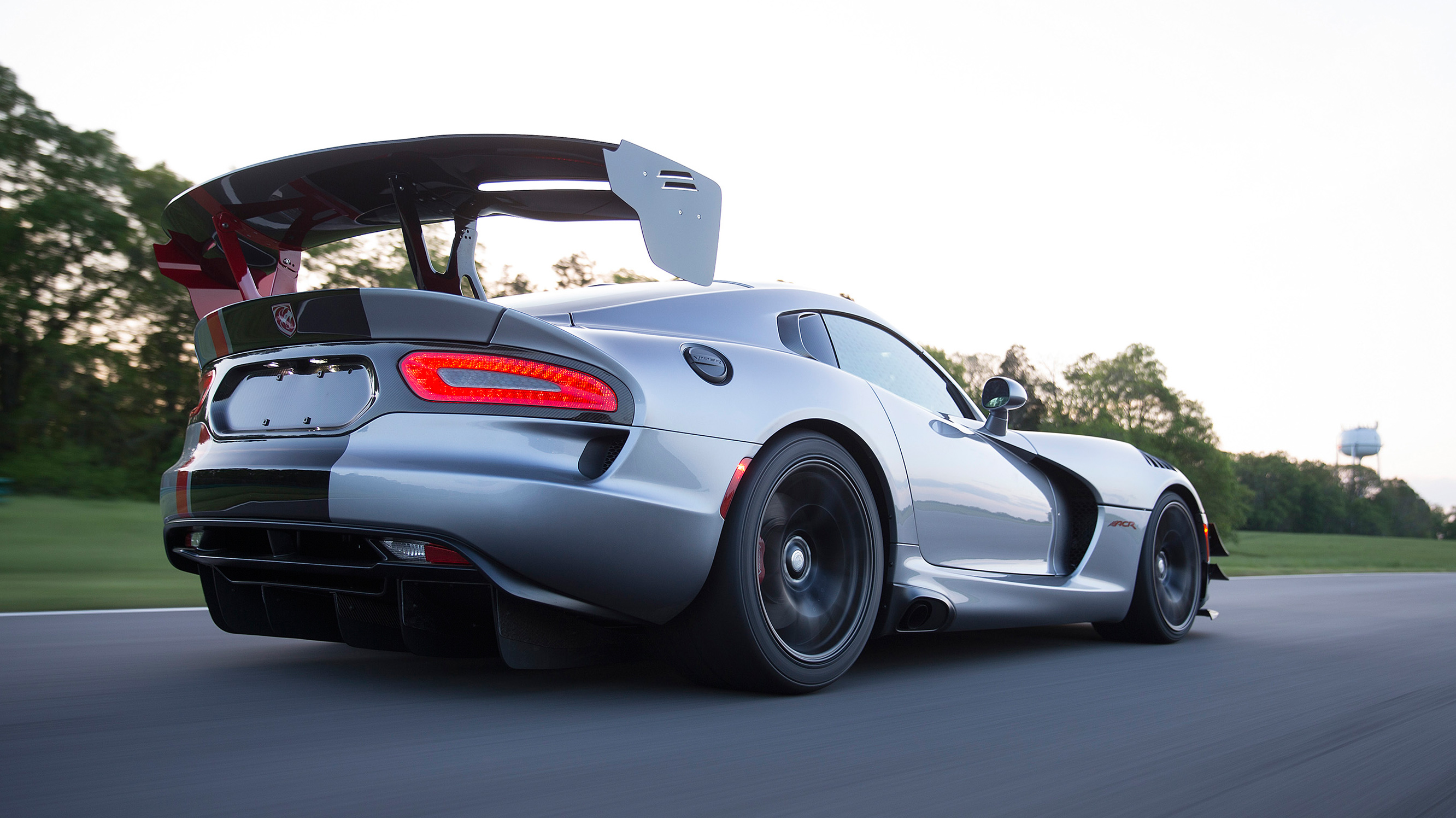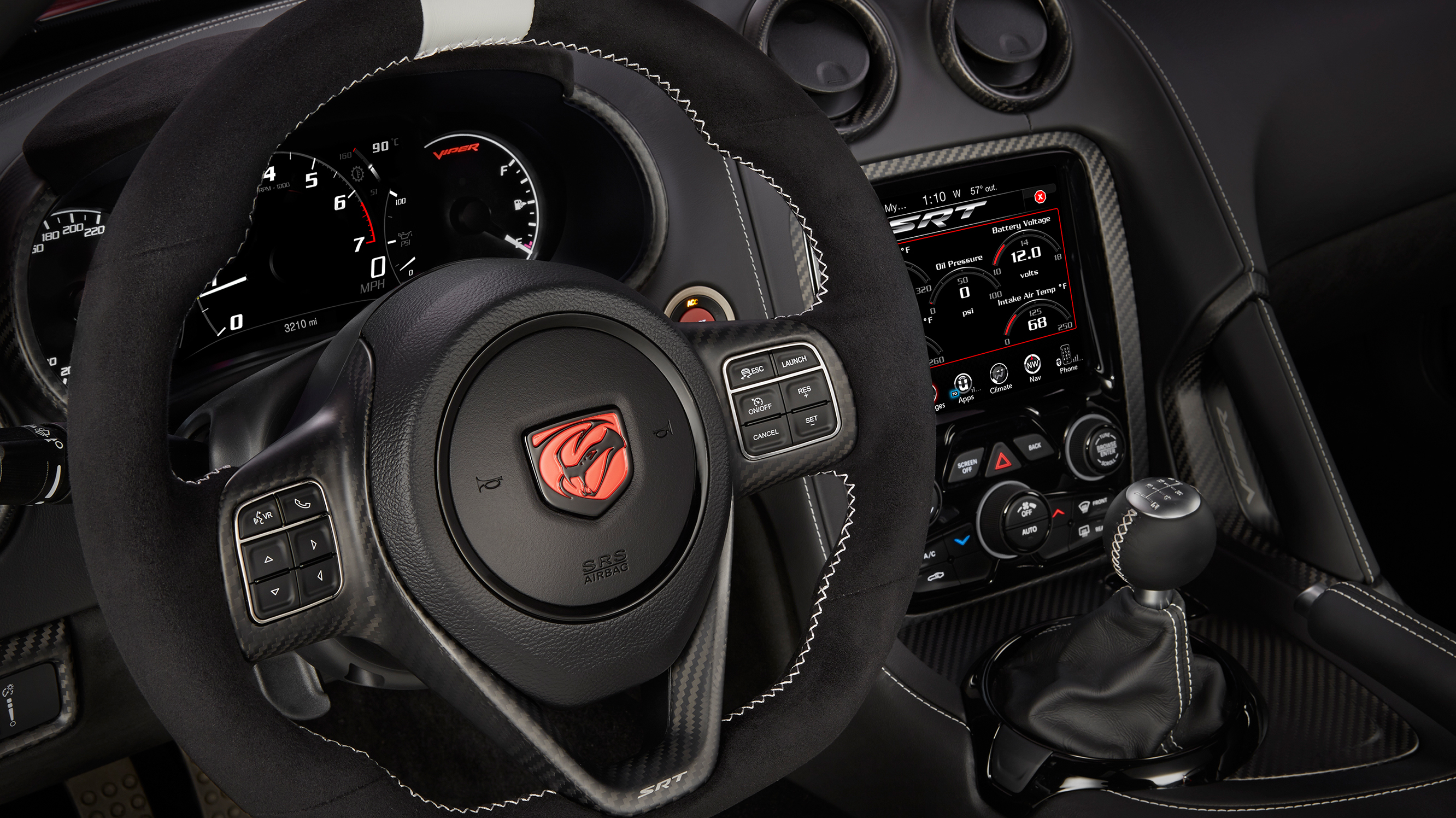
First Drive: Dodge Viper ACR
What’s this?
This beast is the 2016 Dodge Viper ACR. The Viper name should already get your heart rate up, but the ‘ACR’ acronym should have your ticker deep into the red paint if you have any idea what those three letters mean.
For those of you who don’t, ACR stands for American Club Racer. This places the already violently uncompromising car’s spec at the very extreme end of the spectrum.
Be under no illusion. This isn’t a road car for the track. It’s a racer you can put a plate on and drive home - after you have passed and demoralized every other car on the track.
It’s not just a bit faster than your standard trackday entrants, but so much faster it’s almost unfair. Like a parent competing at a kid’s school sports day.
What’s new about it?
The big headline story on the ACR is the extraordinary aero kit. Select the ‘Extreme Package’ option – which you must if you are thinking of getting one an ACR – and the vast, adjustable rear wing is just the final flourish.
The story starts with a massive, detachable front splitter, moves through dive planes and wing vents – also removable for ultimate front downforce – and then proceeds with a rear diffuser that starts from in front of the rear wheels and extends right to the tip of the rear bumper.
The kit creates nearly a tonne of downforce, and so much drag it lowers the top speed from near 200mph to 177mph.
Top Gear
Newsletter
Thank you for subscribing to our newsletter. Look out for your regular round-up of news, reviews and offers in your inbox.
Get all the latest news, reviews and exclusives, direct to your inbox.
So it’s slower than a standard Viper?
At the end of a long straight, yes. But put even a slight curve into the road and the ACR will make that up any deficit almost instantly.
Why? Because it sticks and grips way better than any other Viper. A lot of this is to do with the special Kumho Ecsta V720 tyres, too. They might have a slight tread pattern, but tyres – specially constructed for the ACR – are as near to a slick as Michelin Cup 2s, just with half the wear rate.
They have stiffer sidewalls to deal with all the extra loads. and are a key chapter in the ACR tale.
What else is new about the ACR?
Plenty. The 15.4-inch carbon ceramic front brakes are so big Dodge had to fit inch-bigger wheels to accommodate them. The manually height- and damping-adjustable motorsport shocks weigh several kilos less than the standard units, and have springs twice as stiff as those on the Viper TA.
And then there’s the interior. Previous ACRs have had fewer appointments than a shower stall, but this one is almost luxurious. You get the full Uconnect screen, air conditioning – which disconnects for six seconds when you hit full throttle, a three-speaker stereo and lightweight carpeting.
What about the drivetrain?
Other than some new exhaust tips, this has been left untouched. So it’s still pegged at 645bhp and 600lb ft.
Dodge has no plans to offer engine upgrades, but some key suppliers do: there’s a ‘Stage 2’ kit that lifts power to over 800bhp, which should be considered if you want the ultimate Viper, or have a vehement death wish.
The gearbox is the same six-speed manual unit found in all Vipers, but does have a slightly lighter, sweeter shift action.
How does it drive?
We were driving the car on the incredibly complicated Virginia International Raceway Grand Course, a 4.2-mile brain-teaser and bottle-tester of blind crests into sharp, often adverse camber turns
It is, without a doubt, the most technical track in the US, and not the easiest place to learn your way round while assessing a 600bhp-plus muscle car.
The ACR wasn’t the perfect car to do this in, as it will, like all true race cars, bite your hands off if you don’t give it the right inputs.
But we drove it hard enough to discover that it will shrug off kerbs, bumps, and cambers that have flung other cars off the track, thanks to its aero and chassis mods. That new rubber and extra downforce makes it less twitchy than other Vipers, too.
Braking down from 150mph for a tight 50mph 180-degree right, you could actually feel the aero bleeding off the car as it slowed, the rear getting light and even hopping a little if you weren’t super progressive on the brakes, which are phenomenally powerful.
So should I buy one?
This car should stay on the track and only make the briefest forays onto public roads.
It’s loud, it’s harsh, it’s super fast, it’s a massive amount of fun. But it would be a miserable thing to commute in.
So on one hand it’s an unreserved ‘yes’, as this $121,990 ACR is a budget – and probably faster – alternative to the sold-out Porsche GT3 RS.
But on the other, if you’re buying it for show, and plan to drive it mostly on the street, you’ll need to prepare yourself for some pain to go with the pleasure…
Featured

Trending this week
- Long Term Review
How can you control the Volvo EX30 through a mobile phone?








